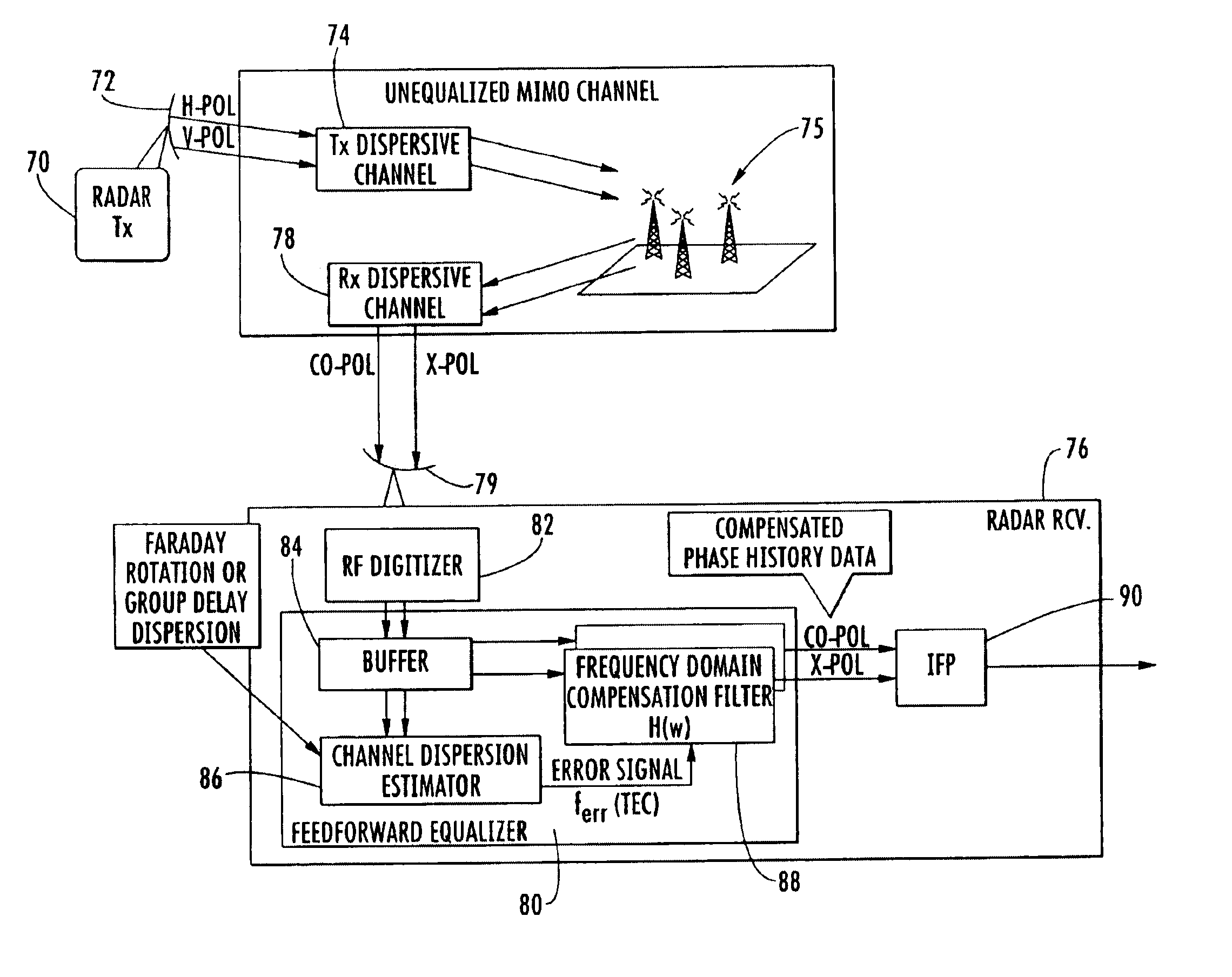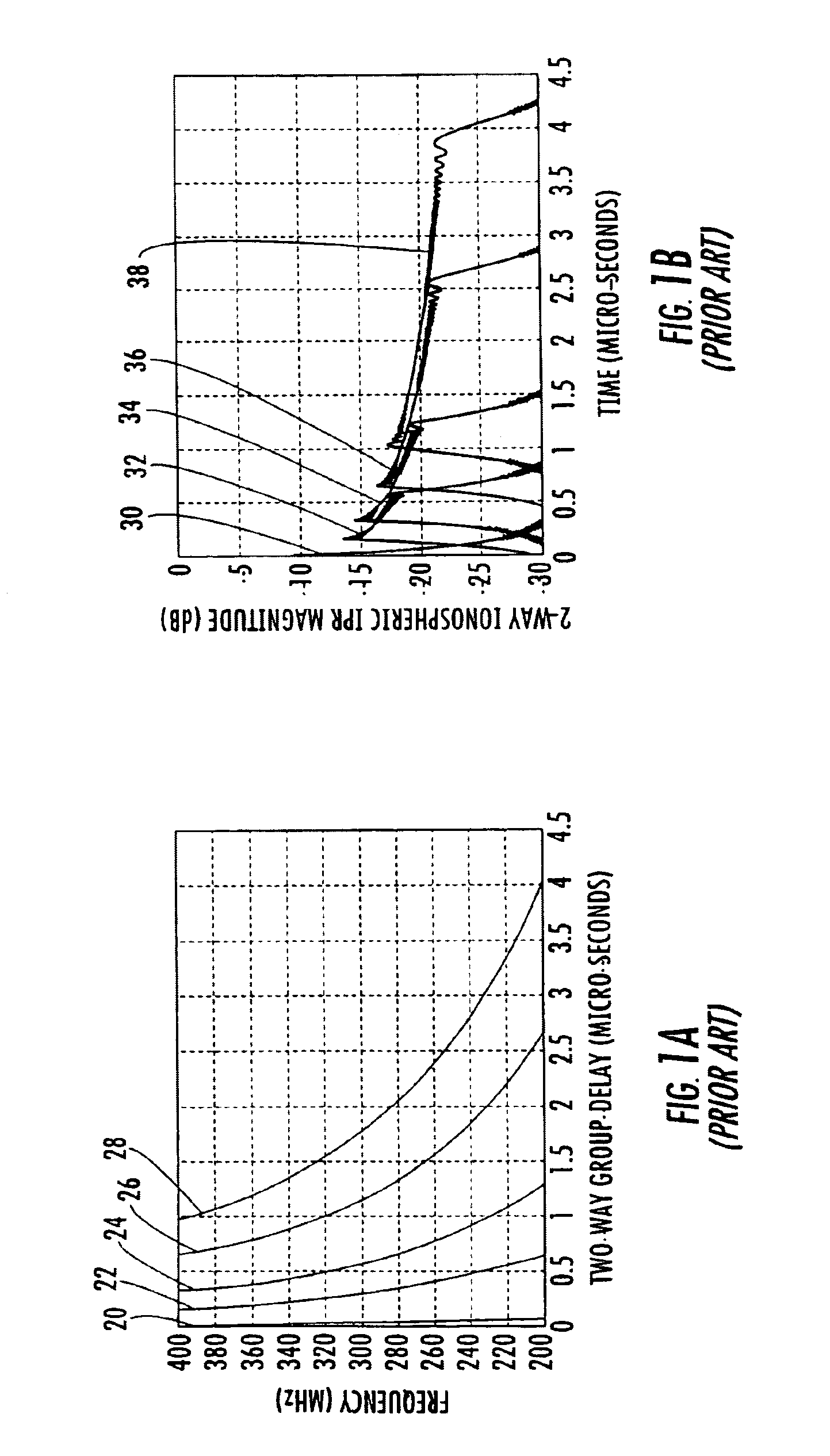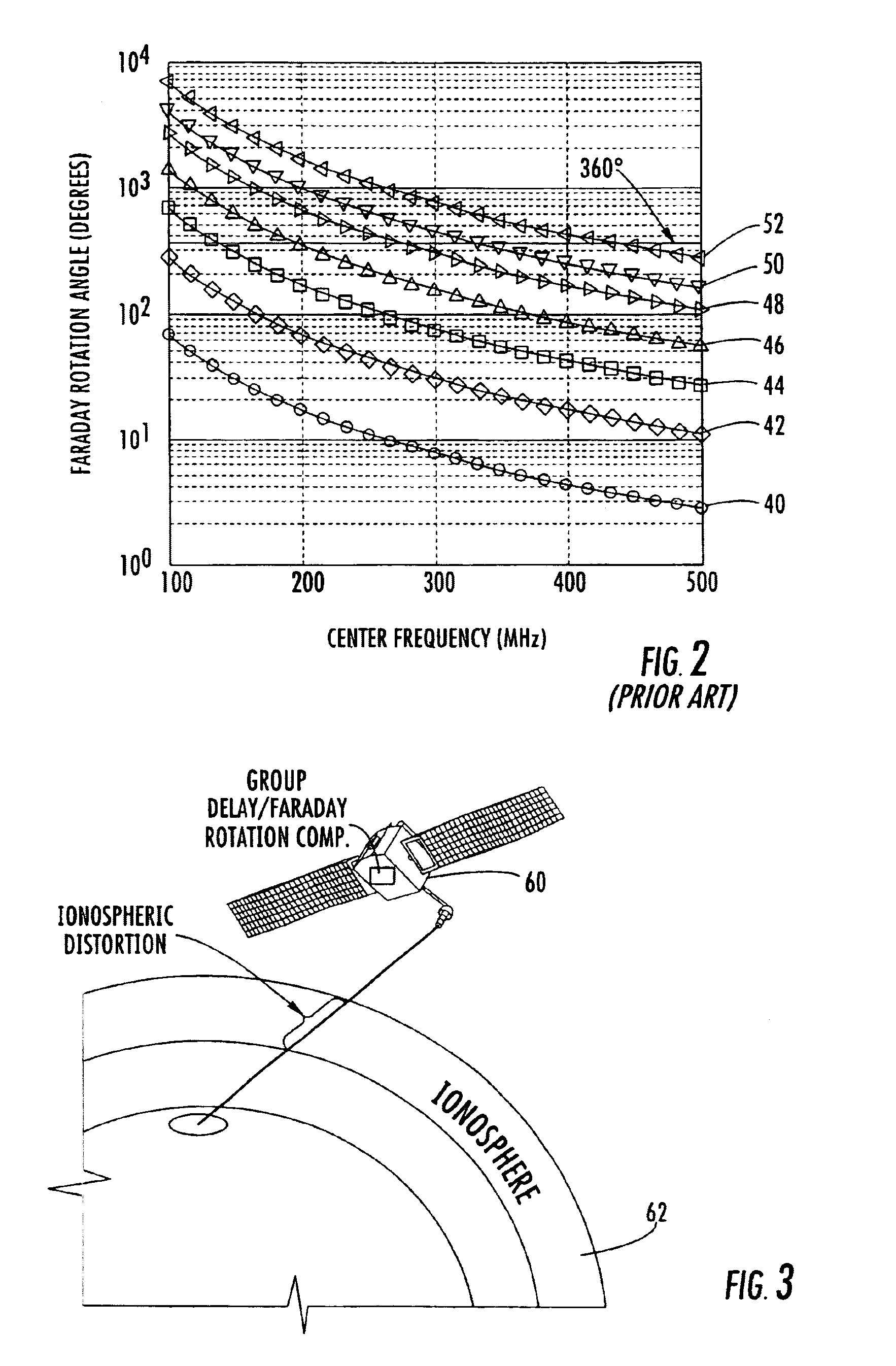Synthetic aperture radar (SAR) compensating for ionospheric distortion based upon measurement of the group delay, and associated methods
a technology of group delay and synthetic aperture, applied in the field of radar, can solve the problems of difficult to predict the polarization of pulses, the inability to use low frequency space-based sars in mode unavailable to low frequency space-based sars, and the development and performance of low frequency sars are severely limited. to achieve the effect of reducing the ionospheric distortion
- Summary
- Abstract
- Description
- Claims
- Application Information
AI Technical Summary
Benefits of technology
Problems solved by technology
Method used
Image
Examples
Embodiment Construction
[0047]The present invention will now be described more fully hereinafter with reference to the accompanying drawings, in which preferred embodiments of the invention are shown. This invention may, however, be embodied in many different forms and should not be construed as limited to the embodiments set forth herein. Rather, these embodiments are provided so that this disclosure will be thorough and complete, and will fully convey the scope of the invention to those skilled in the art. Like numbers refer to like elements throughout, and prime notation is used to indicate similar elements in alternative embodiments.
[0048]A multi-input and multi-output (MIMO) adaptive equalization technique for compensating ionospheric distortion imparted on signals used by a synthetic aperture radar (SAR) operating in the VHF / UHF band are discussed in detail below. The MIMO technique estimates the effective ionospheric conditions via observation of the varying group delay induced by the ionosphere, in...
PUM
 Login to View More
Login to View More Abstract
Description
Claims
Application Information
 Login to View More
Login to View More - R&D
- Intellectual Property
- Life Sciences
- Materials
- Tech Scout
- Unparalleled Data Quality
- Higher Quality Content
- 60% Fewer Hallucinations
Browse by: Latest US Patents, China's latest patents, Technical Efficacy Thesaurus, Application Domain, Technology Topic, Popular Technical Reports.
© 2025 PatSnap. All rights reserved.Legal|Privacy policy|Modern Slavery Act Transparency Statement|Sitemap|About US| Contact US: help@patsnap.com



